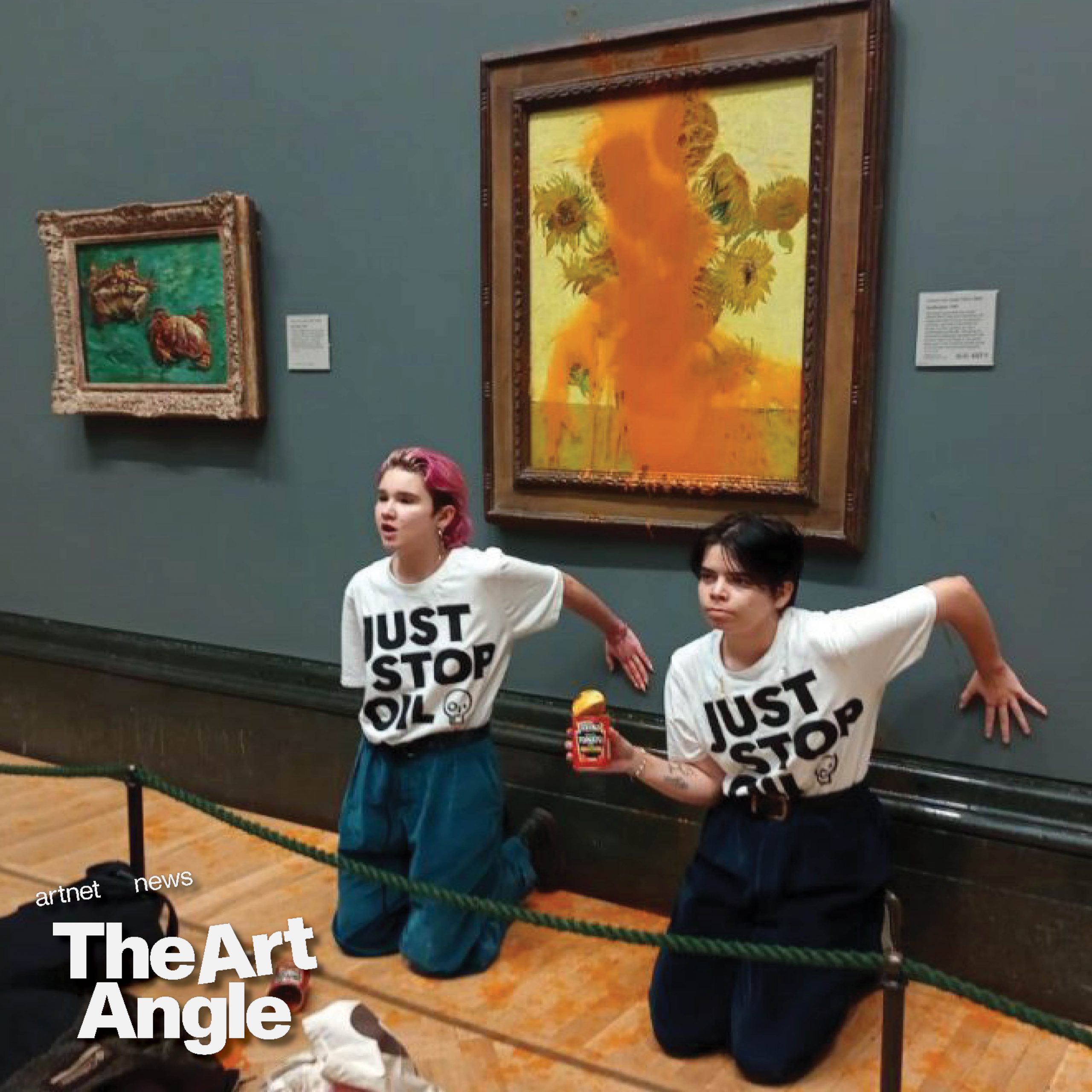
Welcome to the Art Angle, a podcast from Artnet News that delves into the places where the art world meets the real world, bringing each week’s biggest story down to earth. Join us every week for an in-depth look at what matters most in museums, the art market, and much more, with input from our own writers and editors, as well as artists, curators, and other top experts in the field.
On October 14, two activists, Phoebe Plummer and Anna Holland, walked into the National Gallery in London and threw a can of tomato soup on Van Gogh’s Sunflowers while wearing shirts that read JUST STOP OIL. The action was part of a larger cycle of disruptive occupations and direct action by environmentalists in the UK, demanding dramatic action to cut fossil fuels in the face of climate change—but the Van Gogh soup attack by far drew the most media attention. Indeed, the tactic of using attacks on artworks to get their message out has caught on with campaigners this year, with environmentalists in at least half a dozen countries making headlines with spectacular actions in museums—gluing themselves to famous pieces, spray-painting the walls around them, or throwing food at artworks.
These actions have, in turn, touched off a fierce debate among observers and activists alike about the art-attack tactic. Is it the kind of desperate move needed to shock the public into action when nothing else seems to work? Or do the actions repel otherwise sympathetic observers, isolating a movement that needs to scale up dramatically?
London-based art journalist Farah Nayeri is a frequent contributor to the New York Times, and the author of the recent book Takedown: Art and Power in the Digital Age, which looks at how the digitally empowered activism of the last ten years has changed what the public expects from a museum. In an essay for Artnet News responding to these new museum actions, she wrote about the long history of vandalizing art for a cause, from suffragette Mary Richardson slashing Velazquez’s Rokeby Venus more than a century ago, to protests within British museums against oil giant BP’s sponsorship over the last decade.
This week, Artnet News’s national art critic Ben Davis spoke to Nayeri about this history, and what the stakes of the new protests truly are.
Listen to more episodes:
The Art Angle Podcast: Jerry Saltz on What It Takes to Be an Art Critic Today
The Art Angle Presents: How Four Mexican Photographers Captured the Maya Riviera’s Raw Beauty
The Art Angle Podcast: How the Rubells Built an Empire Out of Minting Art Stars
The Art Angle Podcast: How the Lucas Museum Plans to Tell Riveting Stories Through Art
The Art Angle Podcast: How—and Why—Paul Allen Built His Billion-Dollar Art Collection
The Art Angle Podcast: How A.I. Is Changing the Business of Being an Artist
The Art Angle Podcast: Can Artists Ever Beat Flippers at Their Own Game?
The Art Angle Podcast: Can Art Basel Make Paris the World’s Art Capital Once Again?